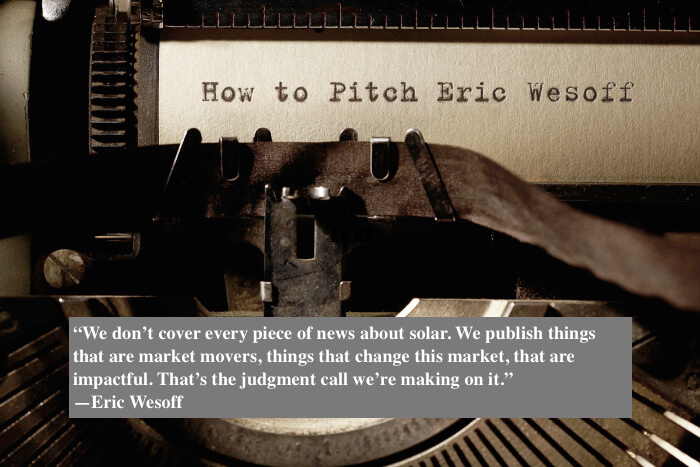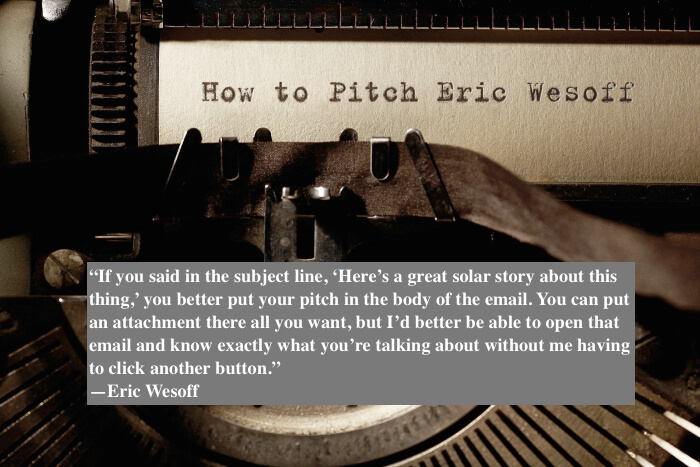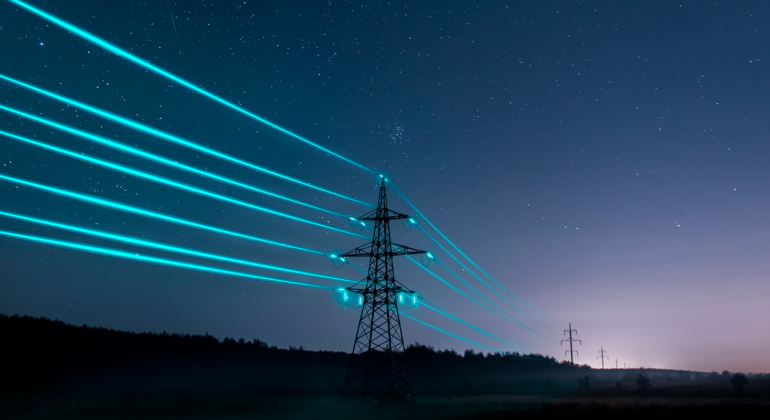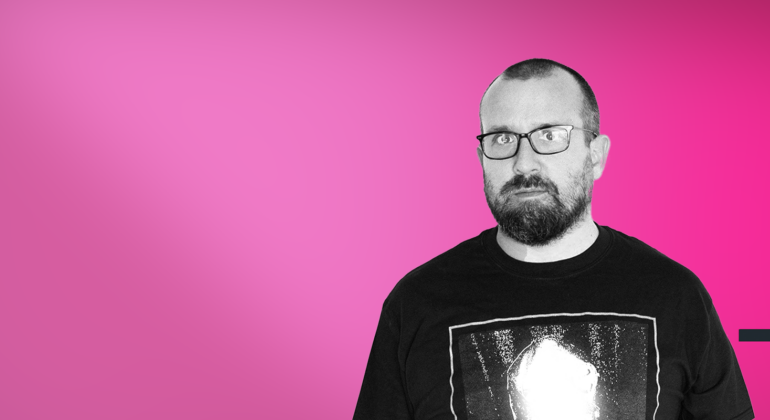
Ever wondered what happens when you send a press release to Eric Wesoff, editor-in-chief of Greentech Media, arguably the most widely read and influential publication in the alternative energy business. As many PR pros may know, the answer is often nothing. But Eric has valid reasons for ignoring you or your solar company’s PR surrogate, and he generously revealed those reasons and more when we got on the phone the other day to talk about solar PR, marketing, brand, and more.
Due to the length of our phone call, I’ve broken up our conversation into three posts. In Part 1, Eric talks about the realities of being an editor with a flood of daily information and what interests him… and what doesn’t. He also reveals some very useful dos and don’ts when contacting him.
Tor Valenza (TV): What kind of stories are you looking for?
Eric Wesoff (EW): Realize that my fellow editor Stephen Lacey and I receive hundreds of emails per day, and we’re tasked with figuring out one or two or three stories out of that cacophony that’s something we want to cover.
TV: Give us an idea of what topics, in general, that interest you.
EW: We have a number of bells that we like to ring. It should have something to do with distributed energy resources (DERs), or with the intelligent grid, or with how regulations are changing to transform the grid, and we love this regulatory and policy transition that’s changing this century-old trillion-dollar industry. That certainly appeals to us. On the other hand, a well-pitched technology story on some obscure technology that has nothing to do with the grid edge appeals to the editors and appeals to people who don’t want to read just about market shifts. They want to read more about electrons, and we’re more than glad to cover that, too.
TV: So if a solar panel manufacturer were pitching you, what would interest you about a solar panel story?
EW: Eight years ago, a Chinese company booking a 20 MW solar farm was a big story. That was a big deal and we would absolutely cover that. Now these installations are just the brick and mortar of creating an industry and not really that newsworthy. So solar projects are hard to cover these days unless they’re accompanied by some big bright shiny object: The biggest, the largest,the most efficient, or only one done on a nuclear waste site. There has to be something that differentiates it. … We don’t cover every piece of news about solar. We publish things that are market movers, things that change this market, that are impactful. That’s the judgment call we’re making on it.
TV: What are the top dos and don’ts for solar PR people when reaching out to you and other GTM writers and editors?

EW: As I said before, we are pitched so much, so we’re looking for reasons not to read your press release. Give me a reason not to invest my time in reading about your company.
If you send me a press release with a subject line that doesn’t convey any information, and just says, “I thought you might like to see this” and then put the press release in a Word document attached to that, you haven’t given me any information in the subject line or the body of the text. You’ve just sent me an attachment. 99% of the time I’m going to delete that. I’m going to delete that because number 1, you’ve wasted my time, and number 2, because for all I know, you’ve sent me some malware. You’d be surprised how many times professional PR people do this. I won’t even open up that Word document. Look how much time you’ve wasted of your own life and mine.
If you said in the subject line, “Here’s a great solar story about this thing,” you better put your pitch in the body of the email. You can put an attachment there all you want, but I’d better be able to open that email and know exactly what you’re talking about without me having to click another button. I’m sorry, and I know that seems petty, but I have 1000 things to look at today, and you only have 1 second to make a bad impression on me. It doesn’t seem fair, but that’s the reality of my morning. I’m sorting through 300 emails when I wake up. Which five of those emails am I going to even read? If you give me extra steps or don’t make it appealing, it’s going to get lost in the noise. We might catch it, but it most likely will get lost. That’s the reality of our day.
TV: What other tips would be useful for pitching to you?
EW: You know, I don’t mind a phone call. The phone calls I do mind are like “Hi, Eric Wesoff, publisher of Greentech Media, I want to talk to you about this company I’m working with. The company is ABC Inc., and they have a beautiful…” and that’s when I hear the person reading from a piece of paper. Then I’m pretty much waiting for this phone call to end unless there’s something compelling there.
But I’ve also had some recent calls from people I don’t know. “Hello, this is Joe from ABC PR.” In fact, it was a message left on my voicemail. And the guy, in three or four sentences, he made his point. I called him back and I worked on the story or gave it to someone else. So the difference is that one guy reading it, but he’s not fluent with it. And then there’s another guy who tried to talk to me in a conversational way and he sold me on the story. It took 5 seconds.
We reserve the right to change those rules tomorrow, because tomorrow’s going to be a different type of news day.
In the second part of our interview with Eric Wesoff, he discusses solar brands and perceived solar commodities, and whether he reads companies’ content marketing.
Tor “Solar Fred” Valenza is the chief marketing officer of solar at Kiterocket. Follow him on Twitter at @SolarFred.


